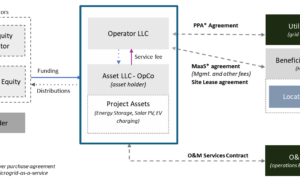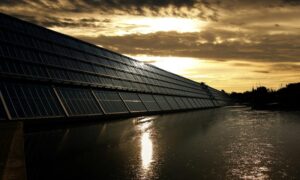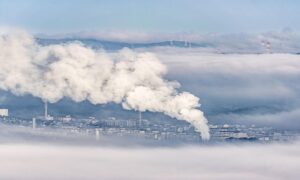Biogas is a combination of methane (CH4), carbon dioxide (CO2) and a trace of other gases. Biogas is a source of renewable energy created when organic materials (plant and animal products) decompose in an oxygen-free environment, a process known as anaerobic digestion. Anaerobic digestion is used in biogas systems to recycle organic waste, converting it into biogas, including energy (gas) and useful soil products (liquids and solids).
One of the primary benefits of biogas is that it is a sustainable energy source that can be generated locally, hence minimizing reliance on fossil fuels. Utilizing organic waste to generate biogas may assist in minimizing the quantity of garbage transported to landfills while lowering greenhouse gas emissions. Farmers and other organic waste producers may also profit from biogas.
Furthermore, this gas can generate power, heat and motor fuel. In the case of heat and electricity, biogas is burnt in a generator to generate electricity. Biogas is cleaned and compressed when used as car fuel to eliminate contaminants and boost energy density, making it comparable to natural gas.
The Process of Biogas Production
All forms of organic waste, mostly animal manure and organic industrial waste, are taken to the biogas plant. Among other things, the dry solid in cattle manure includes carbon, which is converted into biogas, a mixture of methane (CH4) and carbon dioxide (CO2) throughout the process.
In the plant’s receiving tank, the manure and waste are combined. They are then heated to 38–52°C/100–125.6°F and poured into the digester, where biogas is produced. The fermented slurry from the fermentation of the biomass remains in the digester for about two to three weeks before being utilized as crop fertilizer. With this fertilizer, there are fewer odor-related issues while spreading the slurry and a considerable reduction in greenhouse gas emissions.
Geomembrane in Biogas Production
In biogas systems, high-density polyethylene geomembrane (HDPE GMB) are essential as bottom lining systems and floating membrane coverings. They prevent rain and other impurities from entering the pond and confine liquids and gases. By restricting oxygen, they increase the activity of anaerobic digestion. They also keep out unpleasant smells that are a byproduct of anaerobic action.
Some key characteristics of biogas membranes suitable for biogas production include excellent UV and chemical resistance, improved multiaxial tensile strain, increased flexibility (to facilitate installation, welding quality and speed), increased mechanical resistance against wind uplift, increased impermeability to methane migration and increased stress crack resistance.
However, you should ensure that the biogas membrane must fulfill several industry standards, laboratory quality conformity testing, and the design engineer-specified requirements for the individual application.
Final Thoughts
Almost all forms of biogas are produced using the same method, which relies entirely on organic chemical processes. Biogas can serve as a transitional fuel to a sustainable future. It is a zero-waste technique that enables you to generate cleaner energy than you could by utilizing fossil fuels while reducing the amount of garbage in landfills.



































